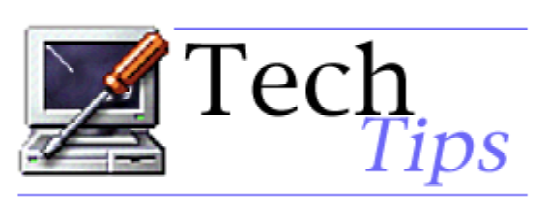Here’s a problem I hope you or anyone you know hasn’t encountered: trouble connecting to the Internet or other on-line service providers. As with most of the other topics, this can be broken down into several key areas.
Step one simply is getting a dial tone with the modem. Although most Mac people never encounter this one, I’ve run into it enough times to know “we” are not immune.
So let’s check the basics:
Internal modems (especially the Express modems) normally require software to be installed in order for the computer to recognize them. Many times a simple fix is to reinstall the Telecom software (it came with your machine, OS 8 CD and is available on Apple’s Web site – a moot point if your modem doesn’t work). Oh, a note on getting the software from the manufacturers Web site when your modem doesn’t work – maybe you could download it now – while it’s working – or you could always bug a friend who has on-line access. One last simple fix when getting your modem to respond is to turn the modem on/off for a few seconds or restart your machine. It’s amazing how many times this has fixed a dysfunctional modem.
A couple of parting thoughts on connectivity issues:
Some new modem pools don’t work too well with older modems causing dropped connections and poor throughput. A simple but elusive fix is to add a few commas “,,,” after the phone number, which causes your modem to ignore the first chirps and connect the way it is supposed to.
Some connection software (MacPPP for example) have idle time-outs that will hang the phone up when you are inactive for a certain period of time. If you seem to be losing the connection, you should check your software to see if the time out value is set too low.
As above, there are also “tickle” values that you can set which send out a few data packets every so many seconds (designed to notice when the connection has been dropped). By having your software “tickle” your provider, you can frequently avoid being disconnected before you wanted to be.
Real World Experience
The system: PowerMac 9600 & 8600.
The problem: SoundEdit 16 crashing.
The solution: Changed disk driver.
The explanation:
Both of these machines were experiencing system errors after updating the System to OS 8 when running SoundEdit 16 (I forget the exact version). It appeared to be a basic conflict with the new OS, and I was going to leave it at that, assuming that the vendor would release an update soon. By accident, one of the clients launched the application from an external hard disk, which had been formatted with a third party utility (FWB’s HDT). After a little further investigation it appears that the application just didn’t cope well with the new driver from Apple’s Drive Setup, but did like FWB’s driver. Formatting the other volumes with FWB cured the problem.
Jeramey R. Valley (jvalley@centuryinter.net)


Leave a Reply
You must be logged in to post a comment.